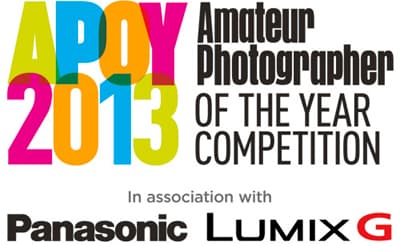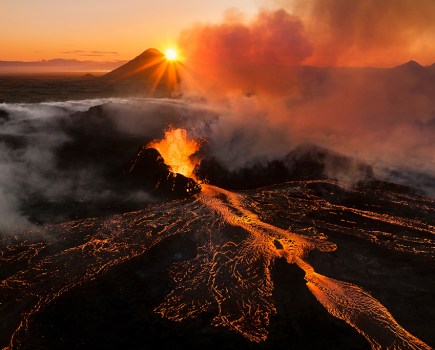APOY 2013 Round Eight – Wideangle World
Please visit the APOY 2013 home page to find all the rules for entry, terms and conditions, the APOY ENTRY EMAIL ADDRESS, and the disclaimers that must be copied and pasted into an email entry.
Entries must be received by 5pm on 28 September 2013
Round 8 of this year’s Amateur Photographer of the Year competition is Wideangle World (wideangle and pan stitch). It should go without saying, but choosing just the right lens for your scene is perhaps the most crucial factor in producing a successful image. The appropriate focal length can serve to obscure as much as it can reveal. For example, a telephoto lens can hone the viewer’s attention into the subject by removing any extraneous details that may serve to distract the eye. However, for this round we want you either to restrict yourself to using a wideangle lens or try your hand at producing a panoramic view.
Any subject will do – so long as it is a wideangle view. We have thousands of pounds’ worth of fantastic Panasonic camera equipment up for grabs, as well as the chance to be crowned Amateur Photographer of the Year 2013. The closing date for round 8 is 27 September 2013. First prize is a Panasonic Lumix DMC-G5 with a Lumix G Vario 7-14mm f/4 Asph lens, worth a total of £1,749.98 Second prize is a Panasonic Lumix DMC-TZ40 worth £329.99. Third prize is a Panasonic Lumix DMC-SZ3 worth £199.99. That’s a prize package worth more than £2,100! The top 30 photographs will be published in our 26 October issue, while the scores from the top 50 images will be posted on the website.
How to enter
Please visit the APOY 2013 home page for information explaining how to enter. Please use your full name as the file name and paste
the disclaimer into the body of your email if you are sending your entry to us
electronically. We also need to know where and how you took your image, plus
the camera and lens used with aperture and focal-length details. Remember to
include a telephone number and your postal address so we can contact you if you
win.
 Photo by Neil Mansfield
Photo by Neil Mansfield
Selecting the right lens to capture your scene is one of the most vital choices you can make. Finding yourself wielding the wrong lens can mean you lose out on a potentially great shot. Knowing when to use a wideangle lens as opposed to a telephoto engages the creative and logistic portion of your brain. While a telephoto lens will well work outdoors, it may not offer you enough space to frame your subject.
With that in mind, we want to see what you can achieve using either a wideangle lens or by producing a panoramic stitch. Our world contains some absolutely breathtaking landscapes that are just begging to be photographed. A wideangle lens can help to convey the sheer vastness of the scenes you find.
However, a wideangle lens doesn’t just have to be for landscapes. These lenses can work fantastically well for interiors, too. And quite surprisingly they can also work for portraits. But why not take it one stage further and try your hand producing a pan-stitch? Again, you can find appropriate subjects everywhere, maybe even in your own home. Any subject will do – just so long as it’s visually engaging and interestingly captured.

First Prize
The first-prize winner will receive a Panasonic Lumix DMC-G5 body with Lumix G Vario 7-14mm f/4 lens, worth a total of £1,749.98. The G5 is a digital single-lens mirrorless camera with a 16.05-million-pixel, micro four thirds, Live MOS sensor. Alongside its 1.44-million-dot EVF is an impressive 3in, 920,000-dot articulated touchscreen.
Being able to shift the screen is great for viewing from a number of angles, and the touch functionality is useful for controlling the shutter, spot AF and metering. Other features include 6fps high-speed continuous shooting and eye sensor under the EVF that can activate AF. The compact and lightweight Lumix G Vario 7-14mm f/4 Asph is an ultra-wideangle zoom lens (14-28mm equivalent) with a 114° angle of view and f/4 brightness over the entire zoom range that is ideal for landscapes and street photography.
 Second Prize
Second Prize
The second-prize winner will receive a Panasonic Lumix DMC-TZ40, worth £329.99. The 18.1-million-pixel TZ40 has a High Sensitivity MOS sensor and Venus Engine, and incorporates a 24mm ultra-wideangle 20x optical zoom Leica DC Vario-Elmar lens (24-480mm equivalent). Wi-Fi connectivity and NFC technology are included, while full HD 1920×1080 videos can be recorded at 50p in AVCHD Progressive and 25p in MP4 format. Other features of the TZ40 include GPS, ISO 100-6400 (extended) and a 3in Multi-Touch screen in an ultra-compact body.
 Third Prize
Third Prize
The third-prize winner will receive a Panasonic Lumix DMC-SZ3 worth £199.99. The slimline 16.1-million-pixel SZ3 compact has a 25mm ultra-wideangle Leica DC Vario-Elmar lens with powerful 10x optical zoom (25-250mm equivalent).
The creative panorama function with ten filters allows users to apply effects to create a horizontal/vertical panoramic image produced with consecutive shots, while Sonic Speed AF helps to catch fleeting photo opportunities. HD video can be recorded in 1280x720p Quick Time Motion JPEG format.
Here are some
tips and suggestions to help you get started
Why not try…
 Photo by Jarrod Castaing
Photo by Jarrod Castaing
Cityscapes
Cities are designed to appeal to our sense of wonder. Walk through any capital city and it’s difficult not to be blown away by the sheer scale and beauty of the architecture. This is particularly true when you are able to gain access to a building that offers a grand, sweeping view of the surrounding landscape. A wideangle lens offers you an opportunity to emphasise just how impressive the scene is. Here we see Jarrod Castaing’s entry from APOY 2011. Jarrod has standing at the optimum position to include three roads in his shot. However, why not also try shooting city skylines, a subject that benefits greatly from pan stitching.

Photo by Tom Mackie
Pan Stitches
Pan stitches (or, as they’re commonly called, panoramas) are a lot of fun to produce. Place your camera on a tripod and ensure that the surface you’re positioned on is flat. Set your camera to manual, including the focus. You then need to pan your image from end to end, making sure that you take a picture at particular increments. Depending on your environment, you may have a number of shapes that you can use as a guide. However, you should also make sure that there is some degree of overlap as this makes it a lot easier when it comes to stitching your images together later. Then, using Photoshop’s Photomerge function, you can produce your panorama.
 Photo by Matteo Colombo
Photo by Matteo Colombo
Something Smaller
We’ve emphasised how a wideangle lens and panoramas can be used to bring out the impressive scale of a scene. But you can also use your wideangle lens to focus on the more intimate scenes you come across. Take Matteo Colombo’s entry from APOY 2011, for example. It’s a beautiful and quiet image, yet one that still shows you so much more than a telephoto lens could in this situation. We also mentioned before that a wideangle lens can be used for portraiture. Usually a long lens would be the optimum choice for a portrait shot, but a wideangle will allow you to include plenty of background while still having your subject fill most of the frame.
Please visit the APOY 2013 home page to find all the rules for entry, terms and conditions, the APOY ENTRY EMAIL ADDRESS, and the disclaimers that must be copied and pasted into an email entry.
Entries must be received by 5pm on 28 September 2013









